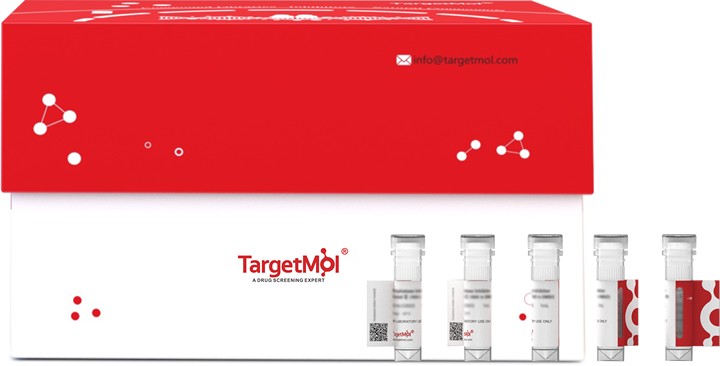购物车
全部删除  您的购物车当前为空
您的购物车当前为空
TFPI2 Protein, Mouse, Recombinant (His) is expressed in HEK293 mammalian cells with His tag. The predicted molecular weight is 24.87 kDa and the accession number is O35536.

| 规格 | 价格 | 库存 | 数量 |
|---|---|---|---|
| 5 μg | ¥ 493 | 6-8日内发货 | |
| 10 μg | ¥ 790 | 6-8日内发货 | |
| 20 μg | ¥ 1,330 | 5日内发货 | |
| 50 μg | ¥ 2,580 | 5日内发货 | |
| 100 μg | ¥ 5,170 | 5日内发货 |
| 生物活性 | Activity testing is not tested. It is theoretically active, but we cannot guarantee it. |
| 产品描述 | TFPI2 Protein, Mouse, Recombinant (His) is expressed in HEK293 mammalian cells with His tag. The predicted molecular weight is 24.87 kDa and the accession number is O35536. |
| 种属 | Mouse |
| 表达系统 | HEK293 Cells |
| 标签 | C-His |
| 蛋白编号 | O35536 |
| 别名 | tissue factor pathway inhibitor 2,PP5/TFPI-2,AV000670 |
| 蛋白构建 | Leu23-Ser230 |
| 蛋白纯度 | > 95% as determined by Tris-Bis PAGE |
| 分子量 | 24.87 kDa (Predicted); 35-50 kDa (Due to glycosylation) |
| 内毒素 | Less than 1EU per μg by the LAL method. |
| 蛋白性状 | Lyophilized powder |
| 缓冲液 | Lyophilized from 0.22 μm filtered solution in PBS (pH 7.4). Normally 8% trehalose is added as protectant before lyophilization. |
| 复溶方法 | Reconstitute the lyophilized protein in distilled water. The product concentration should not be less than 100 μg/ml. Before opening, centrifuge the tube to collect powder at the bottom. After adding the reconstitution buffer, avoid vortexing or pipetting for mixing. |
| 存储 | It is recommended to store recombinant proteins at -20°C to -80°C for future use. Lyophilized powders can be stably stored for over 12 months, while liquid products can be stored for 6-12 months at -80°C. For reconstituted protein solutions, the solution can be stored at -20°C to -80°C for at least 3 months. Please avoid multiple freeze-thaw cycles and store products in aliquots. |
| 运输方式 | In general, Lyophilized powders are shipping with blue ice. Solutions are shipping with dry ice. |
| 研究背景 | Tissue factor pathway inhibitor-2 (TFPI-2) has previously been characterized as an endogenous anticoagulant. TFPI-2 is expressed in the vast majority of cells, mainly secreted into the extracellular matrix. Moreover, in sputum from cystic fibrosis patients TFPI-2 C-terminal fragments are generated and found associated with immunoglobulins. Together our data describe a previously unknown host defense mechanism and therapeutic importance of TFPI-2 against invading Gram-negative bacterial pathogens. |